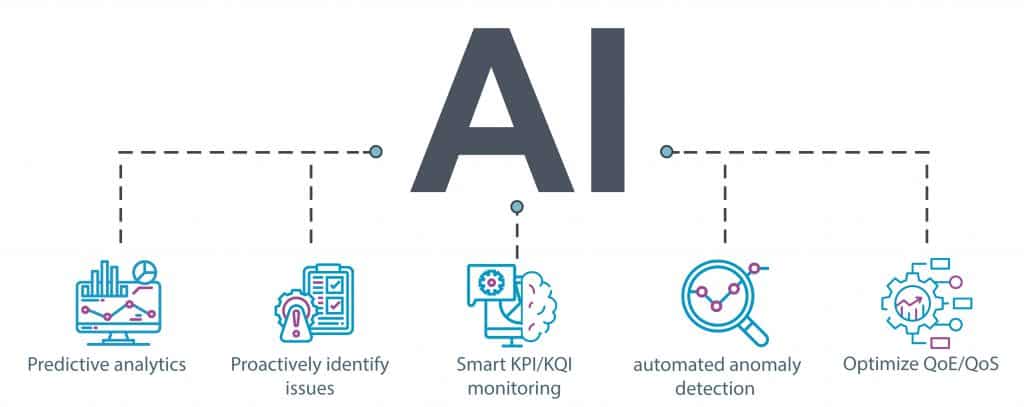Voice over new radio, or voice over 5G, provides voice services for cloud-native 5G networks. As the uptake of 5G architecture enhances, operators can use the existing infrastructure of VoLTE and upgrade their capabilities to deliver the next generation of innovations for voice and data services.
While resting on your laurels may sound comfortable, doing so will lead to being left behind as the race for ever-increasing connectivity carries on. With competition never too far away, both in the form of telecom operators and over-the-top voice providers like WhatsApp, there are some crucial business benefits for operators that switch to VoNR.
Improved customer experiences, such as HD quality calls, guaranteed service levels, etc., can provide new revenue opportunities for additional voice-based (and data) services. VoNR also supports higher spectral efficiency and allows OPEX savings from consolidation and optimization, as well as better performance and low latency services (high speed, shorter delays, and faster call set-up times). Future services like AR/VR/XR, as well as spatial conversations such as surround sound technology, are something to look out for as this technology develops.
As with any new technology, there are challenges and complications that need to be addressed. How will operators be able to detect if the quality of their services is not keeping up with customer expectations? How can they track their network’s latency performance, set up times, and call quality? Coupling this with the massive uptick in connected devices demanding voice services, it is already not possible for humans to be able to track, monitor and resolve all the issues that arise. The way to gain visibility and optimize VoNR services is through automated assurance. Traditional assurance methods of monitoring dashboards won’t be enough for 5G, and operators need to deploy next-generation assurance with built-in AI capabilities.
Role of automation
This is where automation comes into play. Using the latest in AI and ML capabilities, operators will be able to benefit from use cases such as anomaly detection, predictive and prescriptive customer experience analytics, predictive and dynamic slice quality KPIs, and more. Using AI allows for problems in the network to be detected and resolved even before the end user experiences a problem.
In addition, operators will be able to process and analyze immense amounts of network-generated data, which no human can do. Some examples of this include solving complex pattern recognition problems, identifying patterns over time and across different data sources, as well as correlating time series data from multiple sources (network events, event data records, and network packets) to gain smart insights.
Having built-in AI technology allows you to:
- Use predictive analytics that can forecast issues before they occur.
- Proactively identify VoNR performance issues.
- Smartly monitor KPIs and KQIs using automated anomaly detection.
- Optimize the customers’ quality of experience and overall quality of service in the most efficient way, accumulating expertise over time and enabling an intelligence data feed to reduce manual actions.

Figure 1 – AI benefits for operators deploying VoNR
With complete visibility into the entire service and network performance, operators can better understand areas that need to be optimized. Flow-type classification can also segment flows within the network and the IMS core to provide key performance indicators (KPIs) for proactive troubleshooting and network planning.
As a result, the operator gains a unified approach to assuring 5G voice services by delivering network insights that span engineering, quality assurance, and customer care. From engineering tools (online and historical call tracing, in-depth protocol analysis) up to cell analysis and VoNR service dashboards for Network Operations Centers, such a solution lets operators keep a finger on the VoNR service pulse. Detecting and classifying different flow types within the operator’s voice services by creating correlated sessions and using them for KPIs allows operators to supply the best end-user service experience possible.
The advantages of having an assurance solution include:
- Providing a service-level view of the VoNR service quality
- Utilizing AI/ML to detect network anomalies for VoNR automatically
- Proactively highlighting customer-impacting degradations
- Enabling the operator to see the end-to-end service layer with real-time subscriber analytics and advanced troubleshooting for VoLTE and VoNR.

Figure 2 – End-to-End correlation is critical for VoNR service optimization
Operators willing to jump into the world of 5G need an assurance solution that can give them clear insights into what is happening inside their network operations. Of course, this applies to NR offerings, such as VoNR.
While 5G NSA and SA will coexist in most operators’ 5G networks, the combinations between the network architecture options (NSA and SA) and UE capabilities (NSA, SA with EPS-FB, SA with VoNR) will lead to different paths for delivering voice services. So, a phased approach of 5G deployment and voice services will be the path forward for most operators.
As 5G SA coverage continues to expand, new use cases like VR/AR (virtual reality/augmented reality), Industrial IoT, and URLLC (ultra-reliable low latency communication) will drive innovation for exciting new services that require real-time analytics to smartly monitor quality. Voice services is one of the critical services for 5G’s successful technology migration, evolution, and innovation. Therefore, it is essential to deliver high-quality services to compete with over-the-top providers and satisfy paying customers. This requires a sophisticated assurance solution.
Not only does RADCOM ACE have the capability to provide precisely such a solution, but using it comes with some tangible business benefits to the operator.
They include:
- Enhancing the VoNR customer experience by up to 30%
- Automatically detecting up to 35% of VoNR degradations using AI/ML
- Improving the time to resolution by up to 40%

Figure 3 – AI detecting VoNR degradations automatically
Summary
RADCOM ACE provides operators with an automated, cloud-native assurance solution for VoLTE and VoNR. The solution smartly monitors these complex services from the RAN to the core and provides subscriber analytics and advanced real-time troubleshooting to ensure subscribers receive great voice service experiences. In addition, with the built-in artificial intelligence capabilities, operators can move to a more proactive and automated approach to managing VoNR and VoLTE services to prevent churn and ensure top-quality services are delivered to customers.

Figure 4 – RADCOM ACE proactively improves voice services for 5G
For more information on how RADCOM can help assure your VoNR activities, please check out our solution brochure here, contact us at marketing@radcom.com or fill out our contact form.
The article is subject to RADCOM’s disclaimers regarding Forward-looking statements and general information under the links below:

